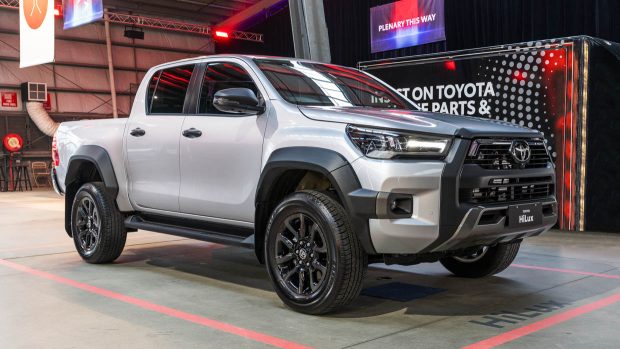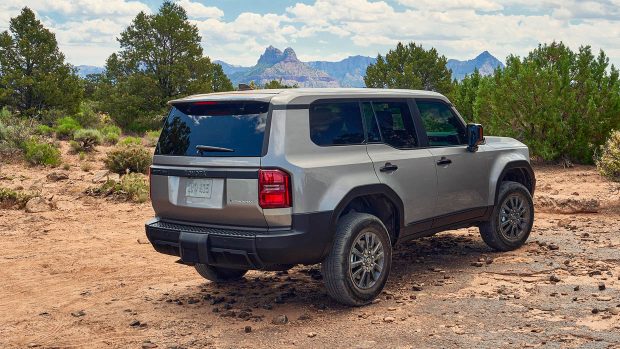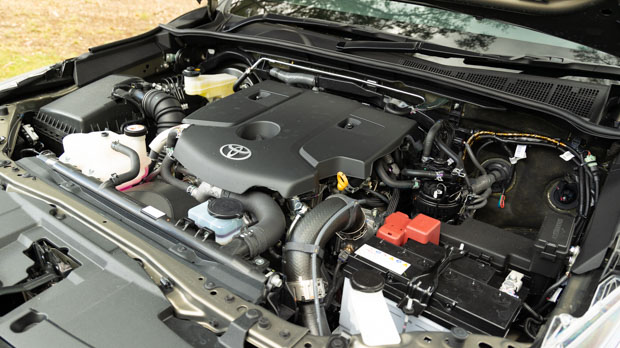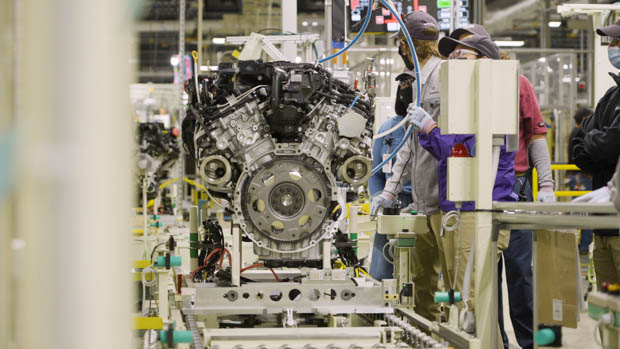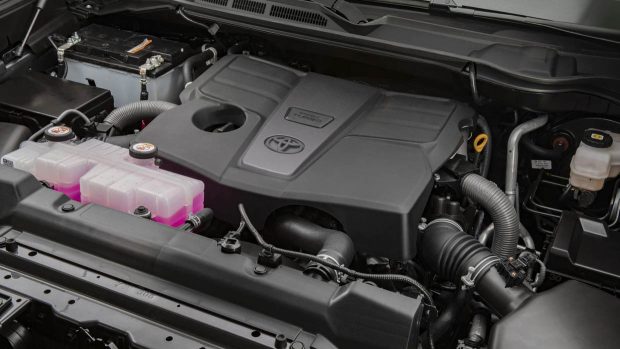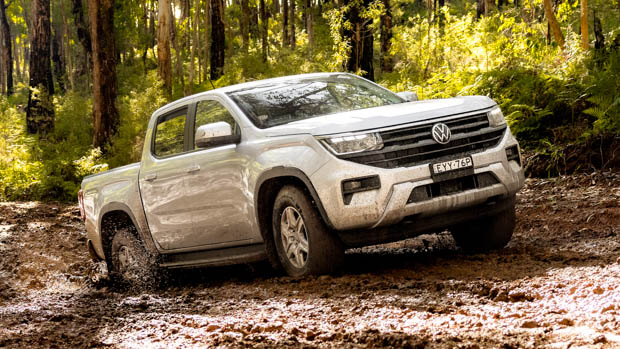-
Car Reviews
- All reviews
- Midsize SUVs
- Small cars
- Utes
- Small SUVs
- Large SUVs
- Large cars
- Sports SUVs
- Sports cars
- Vans
Latest reviews
- Car News
-
Car Comparisons
Latest comparisons
- Chasing Deals
Mud, dirt, water-fording and 3500kg towing tests have all been part of the regimen for the incoming Hilux and Prado mild-hybrid engine
Toyota may have chosen to announce the addition of a 48-volt mild-hybrid diesel engine quietly by way of a nonchalant press release, but brand executives say the technology has been in testing in Australia for years.
A 48-volt mild-hybrid version of Toyota’s long-running 1GD-FTV 2.8-litre single-turbo diesel engine will become the default engine on high-specification versions of the Toyota Hilux in February or March of 2024.
The mild-hybrid diesel will also be the standard – and only – engine on the Australian version of the incoming J250-generation Toyota Land Cruiser Prado which arrives in mid-2024. American buyers get a turbo-petrol hybrid four-cylinder in their Prado model.
As revealed by fellow Australian outlet Drive in June, Toyota is expected to call the 48-volt diesel engine tech “Kinetic Assist”.
By keeping the word “hybrid” out of its marketing, Toyota may be hoping to avoid associating the weaker Hilux and Prado hybrid engine with the company’s much stronger and more effective petrol hybrids that typically cut fuel use by 30-50 percent.
Toyota is downplaying such expectations for the mild-hybrid diesel engine. It says that the fuel economy improvement for the Hilux will be in the order of 10 percent when compared to the non-hybrid version of the 2.8-litre engine.
The 48-volt mild-hybrid system will allow a more extensive and refined auto-stop system and increased engine smoothness. Further, the steering, pumps and climate fans will run off the 48-volt system to reduce fuel use.
Such improvements are typical in 48-volt mild-hybrid systems – technology used extensively by European manufacturers.
What 48-volt systems typically cannot do is move the vehicle under electric power – and that is where Toyota is drawing the line at what it will call a hybrid, executives say.
Tellingly, Toyota will not count sales of the 48-volt Hilux or Prado in its overall tally of hybrid vehicles sold in Australia.
At a media event in Melbourne earlier this week, Toyota Australia lifted the lid on more details about the development of the mild-hybrid powertrain.
The brand says the mild-hybrid diesel has been in testing in Australia for the last three years – a process that included “local development, testing, and evaluation.”
Australia has been something of a centre of excellence for development of the current-generation Hilux, mainly in the design space, though our continent is also a perfect location for testing of new powertrains in oppressive conditions.
Toyota executives claim that the 48-volt diesel is 100 percent suitable for Australian conditions including traversing dirt, deep mud, fording water, and for heavy towing with no drop in capability.
These claims will require independent testing when the vehicle arrives locally.
Similar durability testing is, de facto, being conducted on Toyota’s turbocharged petrol hybrid V6 engine, dubbed the i-Force Max. A name also applied to the smaller four-cylinder petrol-hybrid system available to Prado buyers in the United States from launch.
In Australia, the V6 version of the i-Force Max turbo-hybrid-petrol system will be the standard engine in the Tundra full-size pick-up, of which 300 examples will be leased to customers from late 2023 and put into real-world service.
It is understood that Toyota has adopted a more modest hybrid strategy for the Hilux (and Prado) because of buyer demands to retain high payload limits and high towing capacity.
These factors are typically compromised in EV or plug-in hybrid applications due to the impact of the heavy weight of a large battery.
In the Tundra’s case – a vehicle with a stronger hybrid system than the Hilux – it is the payload that is compromised, being reduced by eight percent, from 790kg in non-hybrid V6 format to 725kg with the i-Force Max V6 hybrid.
For fully-electric utes it is an especially vexed tradeoff between vehicle range, payload and towing limits.
Toyota rival Volkswagen has acknowledged that such a compromise will exist when that company’s e-Amarok electric ute launches mid-decade.
Because the Hilux’s battery is small – less than 2kWh – it is not expected to see any reductions in capability. On the other side of the coin, the fuel efficiency and environmental metrics are unlikely to see a significant lift either.
When the mild-hybrid diesel is launched in 2024, it will become an option for the SR dual-cab trim and the standard engine on the Hilux SR5 and Rogue variants. It is also understood to be the only engine option for the incoming new-gen Prado.
Latest news
About Chasing cars
Chasing Cars reviews are 100% independent.
Because we are powered by Budget Direct Insurance, we don’t receive advertising or sales revenue from car manufacturers.
We’re truly independent – giving you Australia’s best car reviews.
